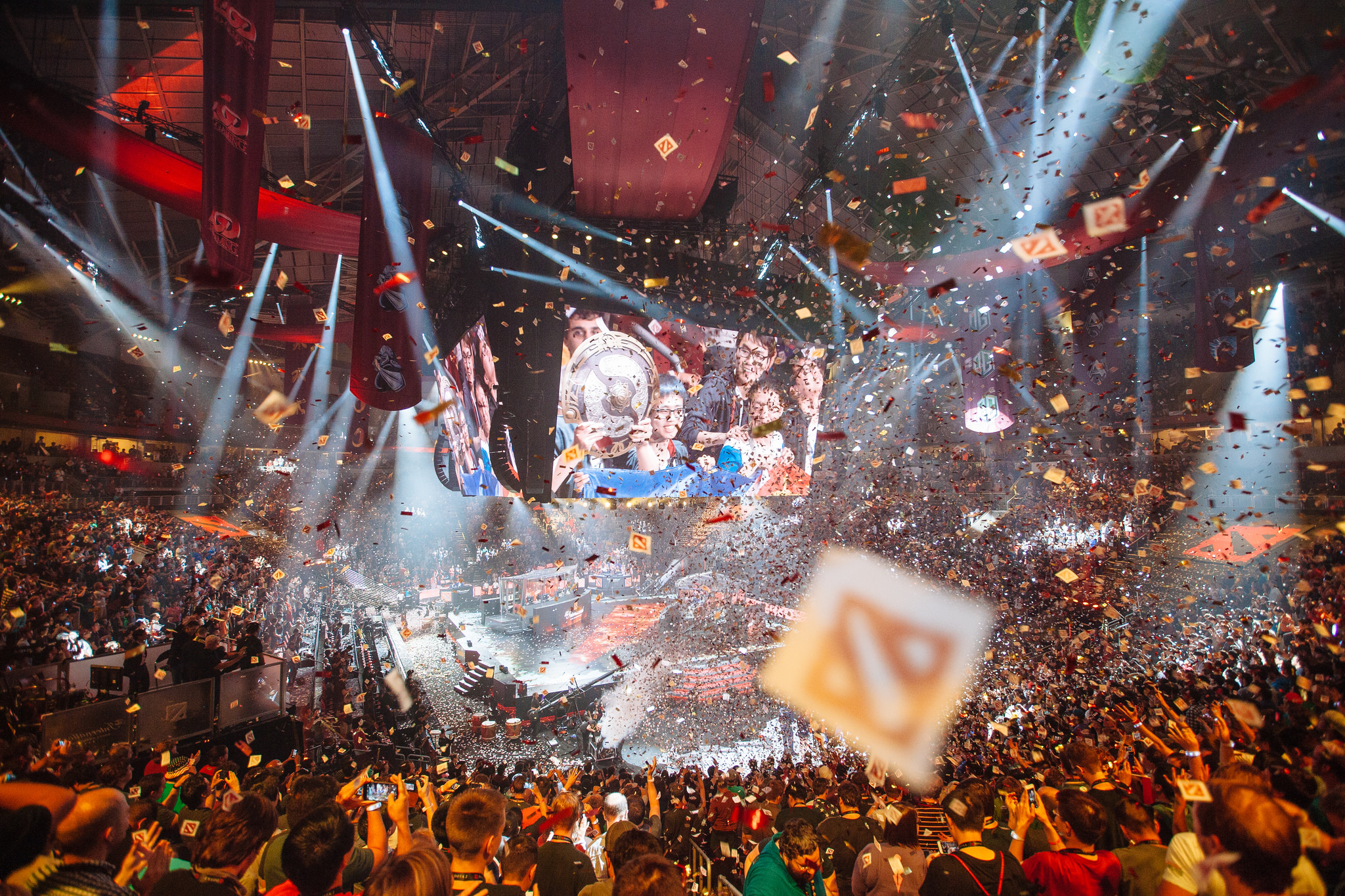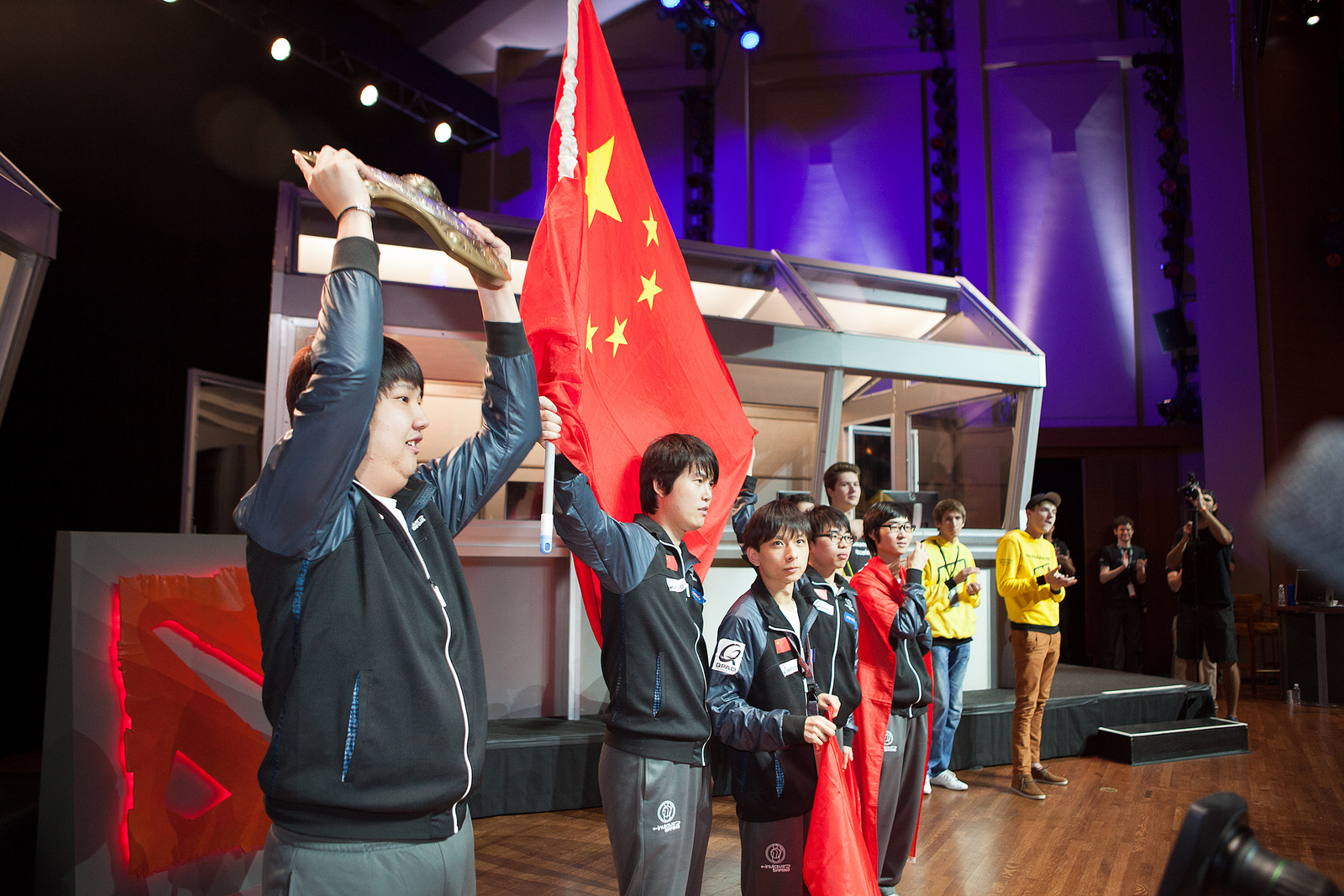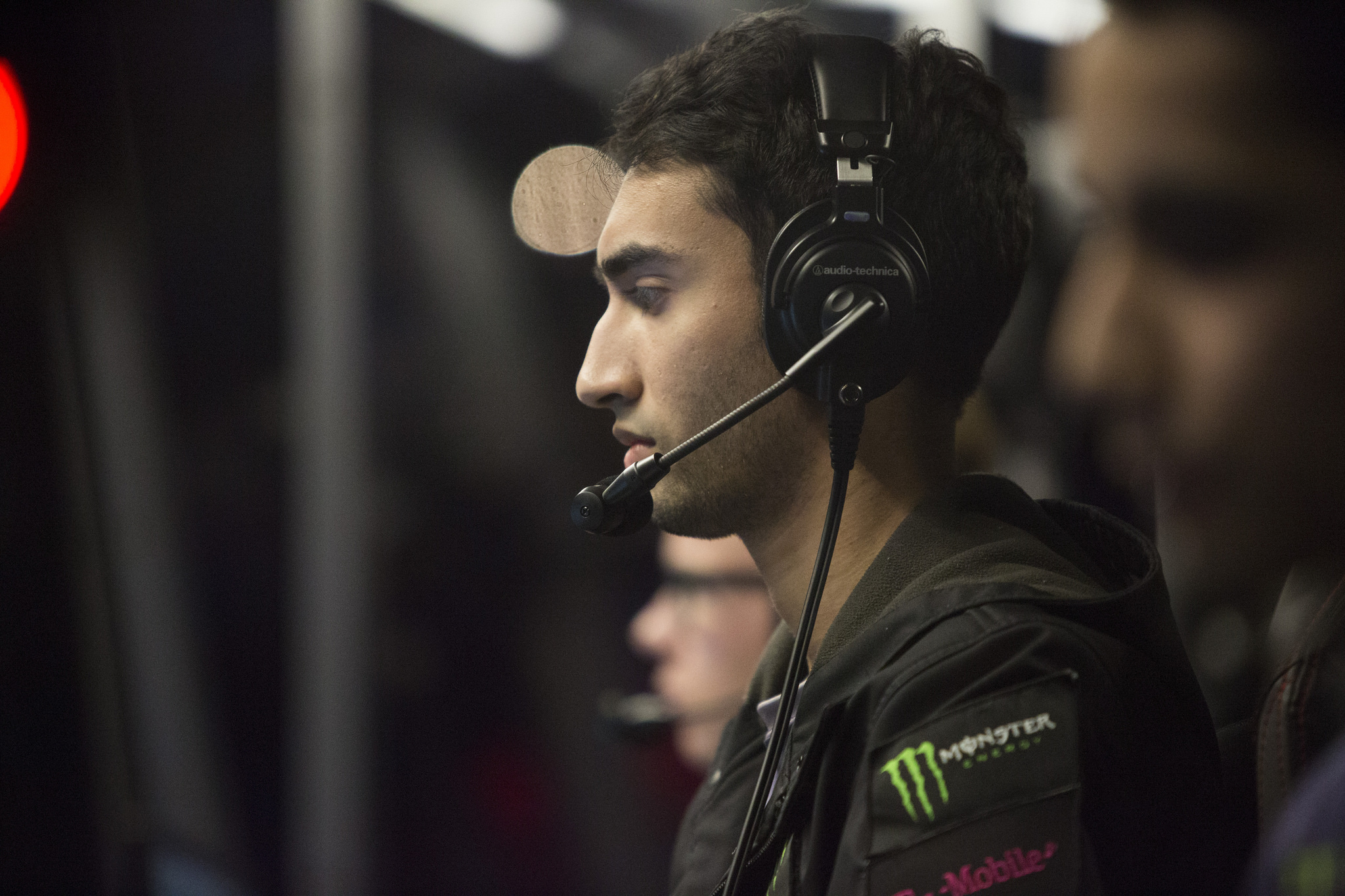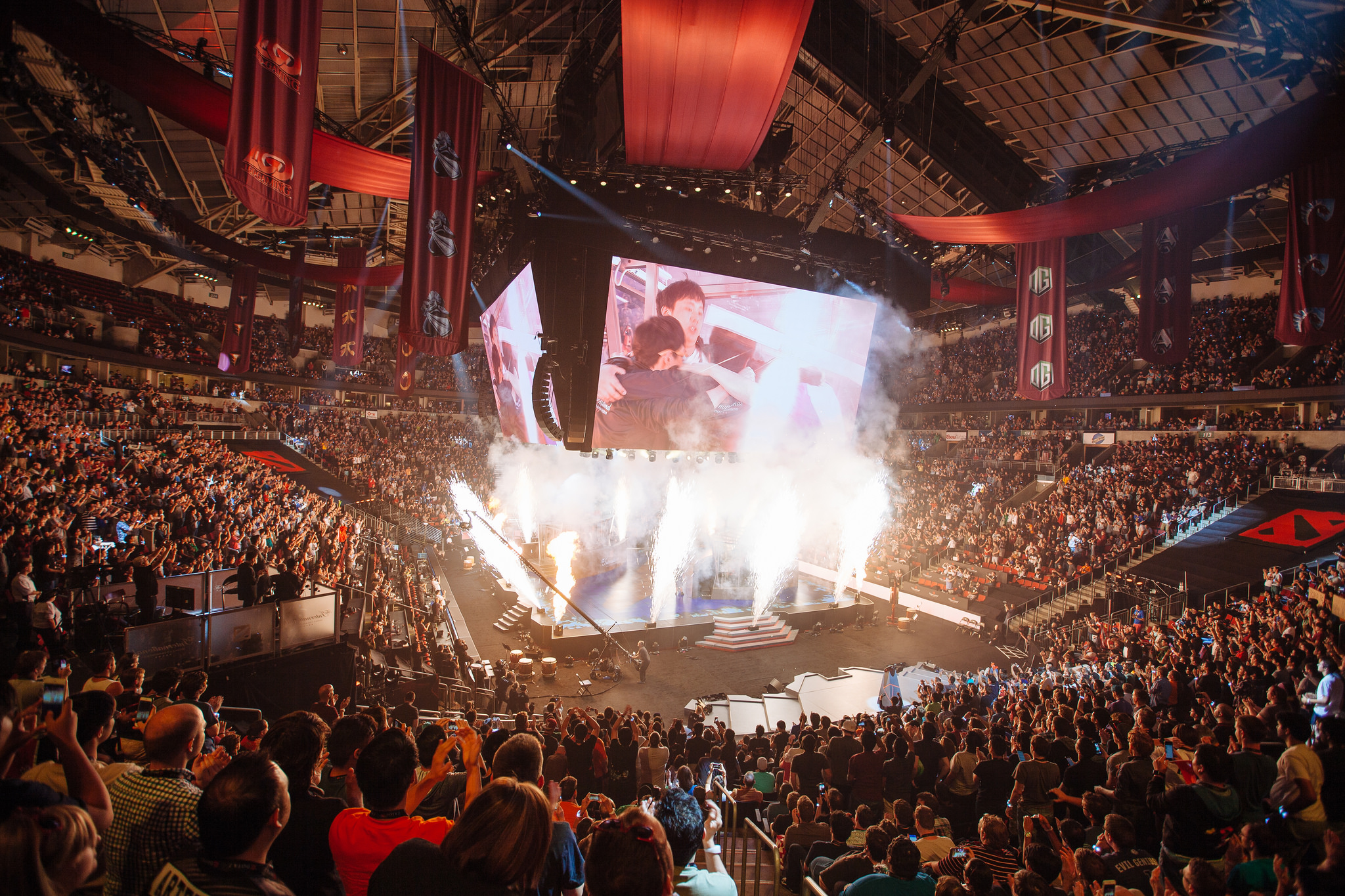Dota 2's International grand finals ranked
The best finales from one of esports' biggest events.

As The International hits its seventh iteration, fans are anxious to see what this year's event will bring. The esports world will revolve around Seattle’s Key Arena for a few long August days, but for now, the meta is up in the air, and the rivalries between teams are close. After six days of intense matchups, it’ll all come down to two teams fighting with millions of dollars on the line in the grand final.
The International’s grand final matches aren’t just deciders for millions of dollars. These matches are a reflection of the state of the Dota 2 scene, including the meta, the players and the atmosphere. Here, we rank all six grand finals of Dota 2's biggest event of the year.
6. TI4: Newbee vs. Vici Gaming
Has there ever been an otherwise-important match so predictable and formulaic that entire forums were speculating that it was rigged from the start?
The whole event itself was considered to be one of The International's most flawed iterations. It was the first event in KeyArena, and Valve was feeling out the lay of the land. Only eight teams were present on the main stage, killing storyline potential.
The meta was considered stale in comparison to most other years, at least from a spectator’s viewpoint. This was the era of the “deathball strat,” in which players would pick pushing heroes and play super-aggressively, often ending matches in well under 40 minutes.
It wasn’t that the players were unskilled and non-strategic, by any means: in fact, it was more of a case of perfecting a technique to the point where it has the opposite of the intended effect, turning skill into routine. Each game was decided not only in the draft, but about six or seven minutes in, when towers would already be under fire.
Not a single grand finals match at this event went above 30 minutes. The longest game in the grand finals ended with an in-game timer of 26:11 (not including drafting and pre-horn). The final clocked in at 15:08.
Keep up to date with the most important stories and the best deals, as picked by the PC Gamer team.
The worst part?
This grand final was on a Monday.

5. TI1: Natus Vincere vs. EHOME
The first International was a strange, awkward affair, as it was Dota 2’s first public display. The casters were unrefined, and while the players knew DotA (the Warcraft 3 version), they were just learning the ropes of this new Valve remaster. That didn’t stop Valve from gathering the top DotA players in the world to showcase the new game.
Spectators can feel all of the above in TI’s first-ever grand finals, in which $1 million was at stake for the winning team. The skill was there, but it’s strange to watch with the lack of hero diversity caused by the obvious lack of heroes imported into the game at that point. The players worked with what they had, and they did spectacularly. As always, watching Na’vi’s mid laner Dendi on Puck is quite a sight.
More than anything, TI1 is a great way to reflect on what’s changed in Dota 2, and the competitive community, from the prize pool to the casting. But in terms of gameplay, especially compared to even recent modern matches, it’s fairly typical. Not that it’s bad. Just not as excitingnd Finals.

4. TI2: Invictus Gaming vs Natus Vincere
A year later, Dota 2 was much more fleshed-out, less of an awkward shell of what it could be and more of an active version of what it was going to be. It was imperfect, but not less exciting. For the most part, it was a “protect the carry” meta, with heroes such as Anti-Mage and Alchemist thriving, so it won’t be entirely unfamiliar to today’s fans.
The most notable IG vs. Na'Vi moment at TI2 was actually in the winner's bracket semifinal, not the grand final. Esports veterans will remember 'The Play', a teamfight that still defines Dota 2’s unpredictability and ingenuity to this day. As Invictus Gaming initiated with an Enigma ultimate, Black Hole, they trapped everyone—except Dendi on the Rubick, who could steal the spell and turn it around. This he did, and Na’vi ended up taking down the entirety of IG, grasping the victory of particular game from their hands.
Despite this amazing moment, IG still took the Aegis of Champions at the end of the tournament. But that’s not to say IG didn’t deserve it—in fact, IG’s were extremely dominant, and it was a well-earned Aegis. This grand final was an absolutely exciting set of matches, with great plays and strategy from each team.

3. TI5: Evil Geniuses vs. CDEC
When TI5 started, very few expected the Chinese wild card team, CDEC, to go as far as they did. But they did, and they breezed through the upper bracket of the event, setting up a highly-anticipated grand final for fans of the dark horse.
Meanwhile, Evil Geniuses dipped down into the lower bracket—but EG is known as the lower bracket team for a reason, and they re-emerged for the grand finals. This was the year Sumail, the legendary Pakistani mid player, was discovered, bringing a new wave of fans from around the world. Led by the "salty" yet genius captain PPD, now the CEO of the org, the team was considered a top pick for the event—and possibly the only American team even close to that title.
It was the North American dream versus the Chinese dark horse, and it had fans across the world at the edges of their seats. In the end, Evil Geniuses snagged it; to this day, many accredit it to PPD’s incredible drafting. The captain, who had been blogging his recent adventures, even agreed to discuss his drafting mentality after a slew of fans requested such. Of course, there was the symphony of skill as well, with Sumail leading a youthful, aggressive mid lane style and Universe’s iconic Six Million Dollar Echo Slam with Earthshaker.
Most importantly, in an era when North America was considered too weak to exist in the competitive scene for any esport, it brought North America into relevancy in Dota 2—and, possibly, esports as a whole.

2. TI6: Wings Gaming vs. Digital Chaos
TI6 was quite an affair. For one, the main two familiar meta picks, Mirana and Shadow Demon in specific, weren’t “winning picks,” but instead just what made sense at the time.
The winning strategy here was actually hero pool diversity. The top two teams, Wings Gaming and Digital Chaos, were praised throughout the event for their massive range of hero picks. After all, you can’t ban a strategy if you don’t know what strategy is being deployed.
For that reason, the grand finals were played both in the drafts and the game itself. While DC had opportunities to shut down Wings in-game, Wings absolutely owned their lineups and the map, showing the world what Dota 2 is really about: perfecting a spectrum of skill, intellect, and strategy. There’s very little to say about this level of play, as a team perfecting such a high level of Dota 2 play is simply a spectacle that must be seen. The way Anti-Mage re-entered the fourth and final game, for instance, is a perfect demonstration of effective and efficient farm as well as reclamation of a game.
Unfortunately, Wings won’t be returning to TI7 due to a roster breakup, but the team has inspired others such as Virtus.Pro to widen their skillset.

1. TI3: Alliance vs Natus Vincere
Many still claim to this day that The International 3 grand final was the best set of Dota 2 matches ever played.
For one, Dota 2 was starting to come out of its awkward beta stage, as it ended in early July, open for all players to access. This meant an influx of spectators—and friends who tagged along—for the biggest event in esports. And it was sure big, as it was the first year to offer the Compendium, thus increasing the prize pool healthily over $2 million.
In the competitive world, Alliance won several straight tournaments, even closing one out with a “perfect” game of 22-0 in team kills, utilizing “rat doto,” a strategy involving objective-oriented play. This means that instead of all of the work being oriented towards teamfights, a player is more likely to go solo and work towards taking down towers and barracks, while the other four manage and control the map. It’s technically difficult, as it’s easy to get killed if done incorrectly.
One matchup popped up constantly: Alliance versus Natus Vincere, the Dota 2 El Classico. So one couldn’t blame anyone for wishing the two would meet at the apex of the biggest esports event in the world. Alliance knocked Na’vi into the lower bracket early on, but the CIS team kicked its way back into the grand finals. And they were certainly grand.
While rat doto, in public matches, is accused of being an avoidant and obnoxious strategy, in its highest levels, it’s a long game of chess, a tense cat-and-mouse situation. There are only two ways to weed it out: nip it at the bud and win the draft stage, or outrace the other team. Alliance perfected the art of draft order, though, and made it impossible to outdraft their “ratter,” AdmiralBulldog, so he would get his pick of competent heroes. Instead, Na’vi had to create an in-game chase as they themselves tried to simultaneously push into their opponents and take them down at the same time.
In the end, it came down to two bare ancients and The Million Dollar Dream Coil—a Puck ultimate by Alliance player s4. It turns out that s4 cancelled an essential teleport by Dendi by mere milliseconds, costing Na’vi the Ancient, and thus, the entire tournament.
Dota 2 is a game of clutches, close calls and milliseconds, and TI3 was a perfect example of the moments that keep bringing players back to the field.

